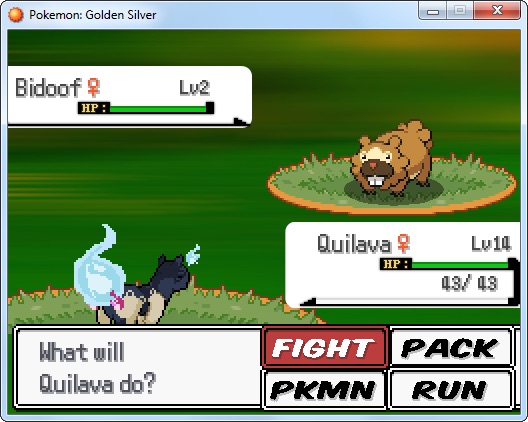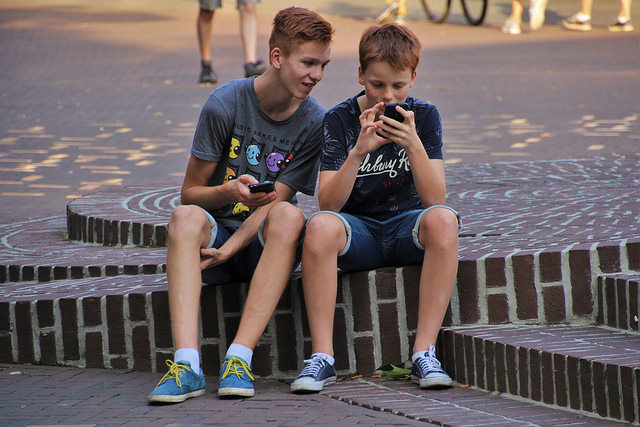
Over the past month or so, I have been jaw-droppingly overwhelmed by the sheer volume of phone users firmly planted across various sites in my local community—not just one or two, or even a handful, but literally hundreds of users at a time steadfastly affixed to one patch of grass for hours and hours at a time.
I have no idea who they are, because I can’t see their faces—but I’ve become quite familiar with the tops of their heads.
At first, I had no idea what on earth was happening to my local harbour area, the fish shop, the lighthouse, the breakwater; all suddenly awash with faceless youngsters (and a sprinkling of older enthusiasts identified only by the lack of hair on their head) staring at their device. And quite frankly, the sea of stillness emanating from these people made them look half-dead—perhaps even zombie-like.
Or dare I say it, “smombie” like.
One of my friends happened to mention to me that her nephew was heading down to the harbour with his mates—“Pokemon Go, you know, all the young kids are into it,” she said.
Pokemon? Wasn’t that some cartoon game from years ago? With swap cards? Visions of bubble like cartoon creatures with big eyes and happy faces emerged in my head. Clearly it mustn’t have left such a mark on me as it had on others.
Or maybe I was just too old.
I was seriously intrigued.
And a little concerned.
What was all the fuss about? This game must be a source of such immense stimulation and excitement to attract such a group of people en masse to various locations, to seemingly drop everything and follow the lure of the real world?
I consulted the official Nintendo Pokemon Go website to see if it could shed any light. The site encouraged potential users to get on their feet and step outside to “find and catch wild Pokemon.”
Hmm. So there is a presumption by the creators of this game that people will be coming “out” from the inside, and perhaps not readily present in the outside (real) world already? Is the idea to get the hard core gamers off their couches and into the sunshine in an attempt to improve their wellbeing and health? To get young kids to break away from their technology infused bedrooms and interact with people in their own communities?
I was initially buoyed by the concept that the game/app might have been created from a genuine need to improve the health and vitality of our younger generation, to foster and encourage new friendships, stimulate innovative thinking and challenge historic assumptions and stereotypes about some of our screen-staring youth.
Until now, my experience of the game itself was merely as a benign bystander, so I felt that the best way to try and figure it out was to download the app myself to see what all the fuss was about. After 10 failed attempts at the creation of my “nickname,” I finally created myself a “trainer” and took the advice of Professor Willow as he walked me through the steps needed to start playing. Within seconds, I had somehow managed to capture “Bulbasaur,” which gave me a slight inkling of satisfaction.
I was surprised to see that my local tiny post office was listed as a PokeStop, along with the local church. I also quickly learnt that I needed to reach Level Five before any battles could take place.

But what I observed more than anything was that my head was not in the real world at all, it was down. Staring at my screen. Swiping and tapping, trying to get the right angle on the PokeBall to throw it at the Pokemon targets. Or to figure out why and how the bat creature got away after I captured him.
PokeBalls, battles, achievement medals—it all sounds like a bit of fun, I guess? Even an activity that could be promoting a bit of fitness? Or bringing a mother closer to her son?!
Would we classify this type of activity as “real world” or “real life?” I’m not so sure. It is certainly taking place in the real world, but all the interaction, fun and engagement seems to be happening deep within the screen of the individual user. That would be—in the virtual world. And no matter how much augmentation between the two worlds is taking place, the truth is (correct me if I’m wrong) that the interaction with Pokemon Go and the ‘real’ world can only be visually experienced on the device being held?
Take away the device and you are left with—you got it—the actual “real” world. I’m sure the teenager who drove his car into a school building can now distinguish accurately between the two. As would the couple who were held up at gunpoint in a remote skate park.
But can we blame the creators for designing a “real world” game that may not actually be literally in the real world? Isn’t it simply an extension of the way that we currently exist in modern society anyway? Staring at the screens on our phones and checking them over 200 times per day? How else are organisations supposed to connect with us if it’s not through the device that controls our every move?
Despite the reported benefits of the Pokemon craze, let’s not forget that there is a highly sophisticated commercial strategy of rather seismic proportions occurring behind every PokeBall, PokeStop and Battle across the globe. Recent reports suggest the game has been downloaded more than 50 million times and that Nintendo’s market value has increased by over nine billion dollars.
Can we begrudge Nintendo for capitalising on this? After all, they are the genius gamification masterminds behind the game that has surpassed facebook and twitter on Google Play virtually overnight.
What can we do as conscious consumers to ensure we receive the positive benefits from the game without the exploitative commercial baggage that comes with it? Mindfulness of the potential dangers of participation might be a good starting point, as well as the avoidance of over-consumption and acceptance that it may be of benefit—to your health and your friendships—in small doses only.
Consider these words of caution from author Dan Brown:
“Even the technology that promises to unite us, divides us. Each of us is now electronically connected to the globe, and yet we feel utterly alone.”
Author: Tehla Bower
Image: Skinny Casual Lover at Flickr / Twitter / Deviant Art
Editor: Renée Picard

 Share on bsky
Share on bsky







Read 9 comments and reply